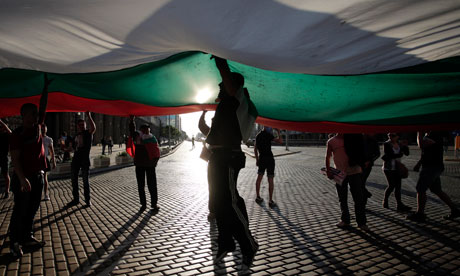The house encircled by the Wall
by Haim Schwarczenberg and Noa Shaindlinger

June 23, 2013
"No one is coming this way, not even the alternative tours groups," explained Claire wistfully and sighed, as she unlocked the door to her gift shop.
I first met Claire Anastas in 2010, when I was taken to see Israel’s separation wall in Bethlehem. A Bethlehem native, Claire’s extended family made their livelihood catering to tourists, mainly Christians, visiting local venerated sights, from the Nativity Church to Rachel’s tomb. Her street-level store offers a myriad of souvenirs and handmade crafts of interest to tourists, including artifacts skillfully created by impoverished communities in need, which in turn benefit from their sales. The top floors are shared by Claire, her mother, husband and children in one apartment and her brother-in-law and his family in another. The rest of the building is used as a guesthouse, where Claire offers her guests home-made organic meals and comfort."No one is coming this way, not even the alternative tours groups," explained Claire wistfully and sighed, as she unlocked the door to her gift shop.
Claire’s family business though fell victim to Israel’s decision to enclose the West Bank by a network of walls and fences, ostensibly for 'security reasons.’ However, countless undocumented Palestinian labourers, sneaking daily into Israel in search of casual work (as the recent Israeli documentary film 'White Night’ demonstrates) are the ultimate proof that the construction of the wall was politically motivated and serves as a means for further land grab. The imposing wall, complete with numerous surveillance cameras, is located not even five meters from the store front, encircling the building on three sides, leaving only a narrow asphalt road which makes it difficult to access by car, let alone by tour buses. I took this photograph back in 2011, during my third visit. I was appalled by Claire's plight and the callousness of Israeli decision makers, their casual redesigning of space utterly destroying people’s lives.
I decided to pay her another visit today to see how she is doing and show solidarity. It was gut-wrenching to see her shop locked in the middle of the day so well into the tourist season. When word got to her, probably through the children playing outside in the claustrophobic front path, there are visitors, she hurried down to greet us and open her shop.
I asked her how she was doing, but I already noted the anguish on her face. In her eloquent and friendly manner, Claire shared some of her woes with us. Her guesthouse is empty these days, even though she should be booked for the summer. Visitors at the shop are few and far in between. Her desperation has become so great she is offering overseas shipping of merchandise sold at the store.
An item on a shelf caught my eye. It was a wooden-carved nativity scene, but with a removable replica of the wall. The artifact managed to capture the multi-layered ironies of life under occupation in the shadow of the separation wall yet still offered a glimmer of hope for a better future. The real-life wall, adorned with artistic graffiti as well as blowups of photos documenting its construction, disrupts Claire’s everyday life in every possible way imaginable.
"They installed a camera overlooking straight into our bathroom," she told us. The Israeli military, which maintains a heavy presence in the immediate vicinity of the house, follows her closely. When Bob Simon’s piece on her life in the shadow of the wall aired on CBS’ 60 Minutes [Christians in the Holy Land], she was called for an interrogation, since the story, viewed by approximately 70 million households in the US, apparently embarrassed the State of Israel. When she installed a basketball hoop on the wall for her children, she was likewise interrogated. The hoop was still there today.
"You are my hope," Claire concluded before we departed. "People like you who come and support us. I believe peace will finally come through your activism." Claire’s house is located on Hebron road, Bethlehem. Please visit the store and guesthouse, or shop online http://
This story, written in collaboration with Noa Shaindlinger, and photograph first appeared on Haim Schwarczenberg's facebook page.
Source











